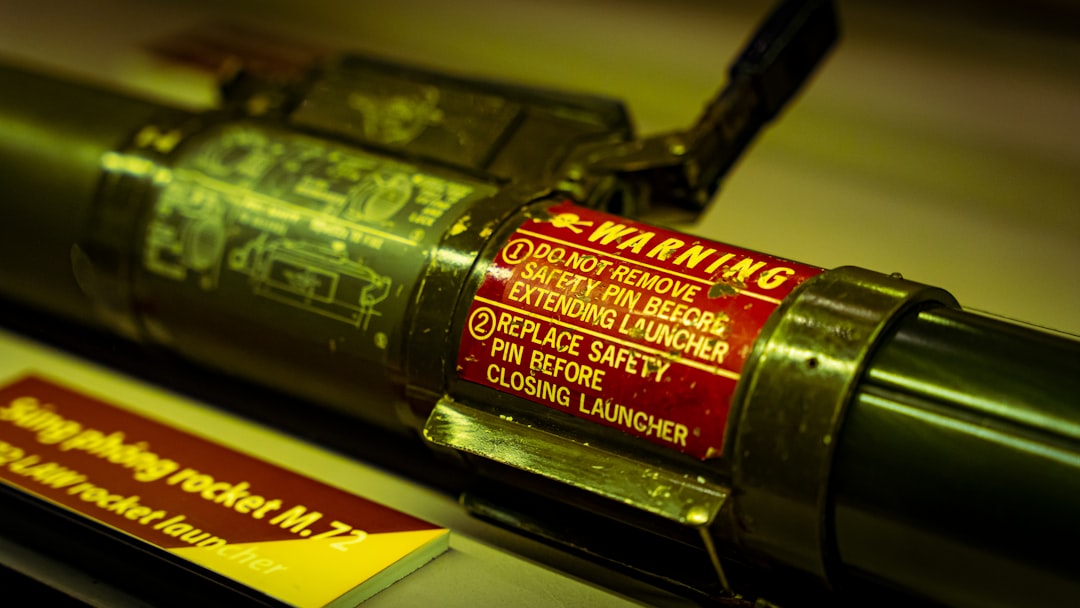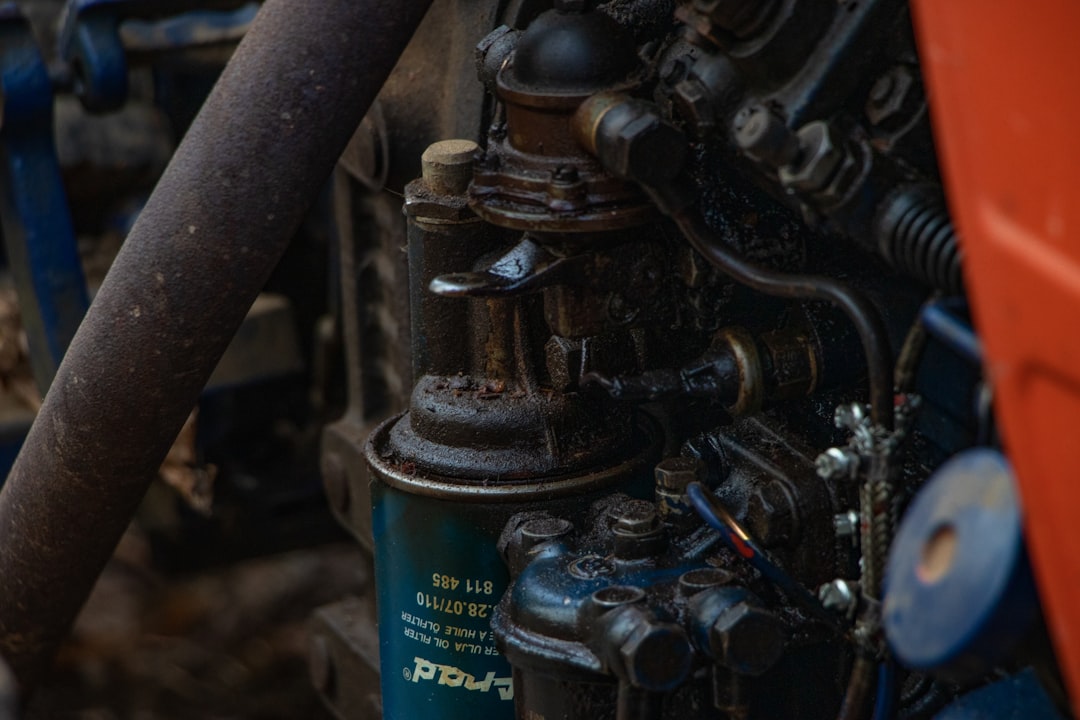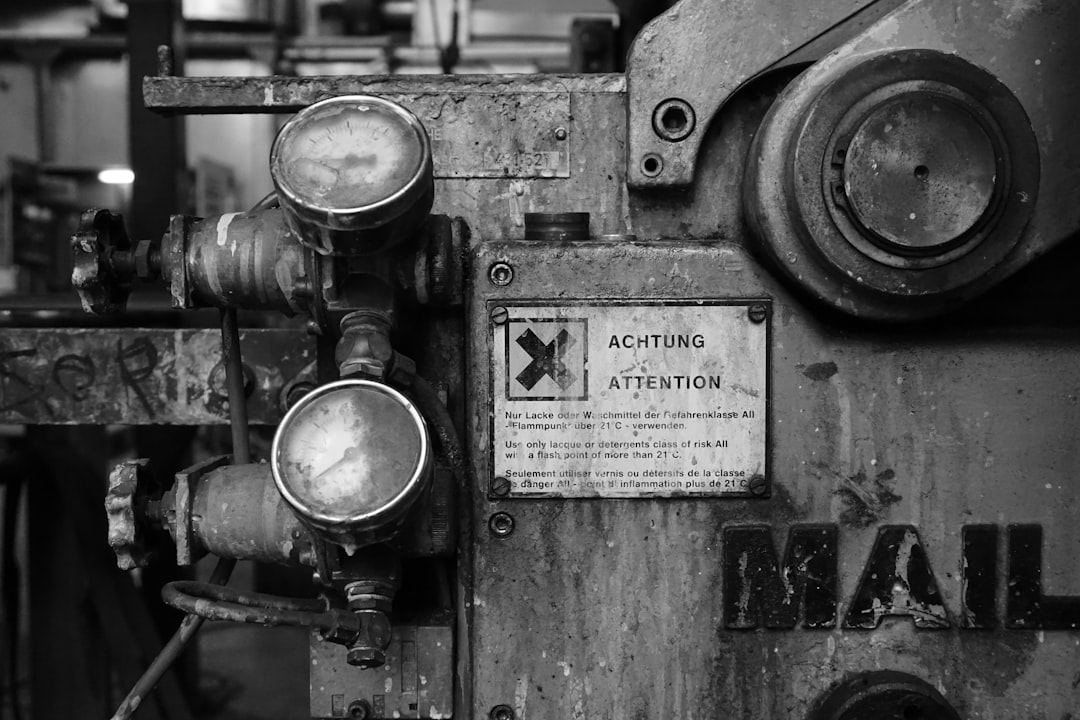

Engage prospects with a scan and streamline customer engagement with FREE QR code marketing tools by Sona – no strings attached!
Create a Free QR CodeFree consultation

No commitment

Engage prospects with a scan and streamline customer engagement with FREE QR code marketing tools by Sona – no strings attached!
Create a Free QR CodeFree consultation

No commitment
Pump repair services are navigating a rapidly evolving landscape, where customer expectations intersect with the need for operational efficiency and seamless communication. For businesses managing industrial pump maintenance, commercial pump repair, or emergency pump repair, traditional manual workflows such as handling paper forms, tracking physical service logs, or distributing printed maintenance schedules often create costly friction, slow response times, and increase the chances of missing high-value prospects or urgent service needs. When crucial customer and equipment data are not seamlessly integrated, pump repair teams may find that leads go unrecorded, service requests slip through the cracks, or valuable upsell opportunities are never surfaced.
QR codes now offer a practical and scalable way to streamline these processes, bridging the gap between offline pump assets and digital systems. With just a scan, technicians and customers can access pump service portals, review up-to-date maintenance tips, order spare parts, or schedule emergency repairs, eliminating cumbersome paperwork and enabling real-time insights at every equipment touchpoint. Modern technology enables repair providers to overcome visibility gaps that once led to lost prospects or neglected follow-ups.
By integrating QR codes into pump repair services, organizations create direct pathways for instant engagement and ensure every interaction, whether it is a service inquiry, a maintenance log, or a part reorder, is automatically tracked for both operational follow-up and future marketing efforts. This approach delivers measurable improvements in speed, customer satisfaction, and long-term retention. Discover actionable strategies to implement QR code campaigns and transform every physical pump touchpoint into a digital channel for responsive service, account-level tracking, and business growth.

QR codes bridge the gap between physical equipment and digital action, allowing pump repair service providers to modernize workflows while addressing industry pain points like missed prospects and outdated service data. The goal is seamless access for customers and technicians, from identifying a fault to booking a technician or ordering parts, all with minimal friction and full visibility.
Start by replacing analog workflows that slow down operations. Many teams still distribute paper troubleshooting guides, rely on handwritten maintenance tags, or collect service requests via phone calls and voicemail. When these touchpoints are replaced by QR-driven digital access, crucial details no longer get lost, eligibility for warranty or service contracts can be verified instantly, and customers receive reliable, consistent guidance at the moment of need.
Modern QR code platforms such as Sona QR make it simple to generate, manage, and track custom codes at scale, so teams can focus on resolving pump issues rather than chasing paperwork or missing vital customer intent signals. When combined with clear calls to action and well-designed landing pages, QR codes accelerate every stage of the field-to-office cycle and lay the groundwork for a more responsive, data-driven operation. Start creating QR codes for free.

Pump repair services frequently encounter offline-to-online disconnects. Clients may see stickers or service notes attached to equipment, yet lack a clear and immediate path to action. This often results in missed leads or deferred bookings that erode lifetime value. QR codes tackle these pain points by turning passive surfaces into instant digital gateways. The scan becomes a bridge to booking, diagnostics, or education, and each interaction can be measured.
QR codes also bring speed and simplicity to processes that were once burdensome. Nobody wants to download an app just to schedule a repair or access a manual, especially under time pressure. A scan takes users to exactly the right resource, whether that is a repair booking page, a compliance checklist, or an asset history. When content must be kept current, dynamic QR codes give service providers the flexibility to update links and materials without reprinting, which protects budgets and eliminates confusion.
For example, integrating a QR code into a technician’s field checklist immediately surfaces valuable engagement data and ensures that follow-up tasks enter your system without delay. Support teams gain visibility, operations leaders track performance by site or asset, and sales understands where upsell opportunities are emerging.

Pump repair and maintenance businesses depend on a range of QR code formats to improve data capture, streamline communications, and support the most common actions customers want to take. Selecting the right type for each context increases adoption and ensures that scans lead to meaningful outcomes.
Dynamic QR codes are especially useful, since destinations can be changed and performance can be tracked without replacing the physical code. Static codes still have a role for long-lived, unchanging resources, but they are less flexible and harder to measure.
Dynamic QR codes stand out for their ability to capture scan data and refresh content. They help mitigate lost opportunities that arise from static deployments with stale information, and they make continuous improvement possible without new print runs.

Opportunities to expand customer engagement and improve operational efficiency are often hiding in plain sight. Many interactions on the plant floor or in the mechanical room are not connected to your digital systems. Strategic QR placement brings those moments online and ensures they are measurable and actionable.
Think about the critical points where customers and technicians make decisions or encounter friction. Design your QR program to support those moments with clear instructions and relevant destinations. When each code addresses a real-world need, adoption increases and the data you collect becomes reliably useful.
These placements help pump service providers avoid lost leads and unlogged service requests, while giving customers a faster, clearer path to resolution. Over time, you will learn which placements and messages drive the most action and can refine your approach based on real performance.

QR codes support a wide spectrum of use cases across the pump repair lifecycle, from first-contact triage through post-service follow-up. The most effective programs connect asset-level codes to specific actions and outcomes, then track performance over time.
Focus on use cases that simplify tasks for customers and technicians, while collecting the data your business needs to prioritize resources and grow revenue. Align each code with a clear purpose and destination, and label it with a benefit-focused call to action.
Each of these use cases improves speed and accuracy at the point of need. They also generate a stream of engagement data that can be used to prioritize field resources, nurture accounts, and evaluate where additional equipment, inventory, or training investments will have the biggest impact.
Every QR scan at a pump or facility is a signal that conveys intent, urgency, and context. By deploying distinct codes across different surfaces and use cases, you can segment scanners automatically and tailor your follow-up accordingly. This targeting protects budgets from waste and boosts conversion rates by delivering the right message at the right time.
Segmentation works best when it reflects actual behavior. A scan on a parts box signals a different need than a scan on an emergency label in a mechanical room. Likewise, a procurement manager scanning a warranty document has different priorities than a site operator reporting a leak. Use your codes to distinguish these audiences and respond in a way that respects their context.
With tools like Sona QR, each code becomes a smart entry point into your funnel. You can automatically tag and route scans, centralize analytics, and stay aligned across marketing, sales, and service teams to create a consistent, high-performing outreach engine.
Disconnected campaigns create wasted spend and inconsistent customer experiences. QR codes unify offline and online touchpoints, guiding customers from print materials and equipment surfaces to digital journeys that are easier to track and optimize. When done well, this integration reduces friction and makes every channel more accountable for results.
Plan your QR presence alongside your broader marketing and service strategy. Map physical placements to digital destinations, and ensure each scan moves the customer forward. Use consistent branding, benefit-driven copy, and responsive landing pages. Then, use analytics to compare performance by channel and refine your mix continuously.
A unified QR management approach keeps channels synchronized and helps you maintain consistent messaging from first touch to contract renewal. Platforms like Sona QR allow you to manage codes centrally, monitor performance, and sync scan data with your CRM and ad platforms for cohesive attribution.
Rolling out a QR program in pump repair services is straightforward when you align each step to a clear business outcome. The following checklist helps you move from idea to measurable impact without losing momentum or clarity.
Begin with a focused pilot that proves value quickly, then expand to additional assets and channels. As you test and learn, maintain a feedback loop between field teams and marketing so you can refine content, placement, and messaging.
Start by mapping where friction occurs in your customer journey or operations. Are urgent requests getting stuck in voicemail? Do technicians waste time searching for manuals? Are spare part reorders falling through due to confusion about compatibility? Choose one or two high-impact problems and define a QR use case that addresses each directly.
Select the code format that matches your use case and measurement needs. Dynamic codes are best for most campaigns since they allow updates, routing rules, and robust analytics. Static codes are acceptable for permanent resources that do not require tracking or future editing.
Design your codes for the environment where they will be scanned. Use clear calls to action, legible labels, and adequate contrast. Account for challenging conditions such as low light, vibration, moisture, or dusty mechanical rooms.
Roll out codes to placements with the highest operational or revenue risk first. Prioritize equipment labels, service orders, inspection tags, and direct mail that influences maintenance scheduling. Train technicians and customer-facing staff to explain the benefit and encourage scanning.
Set up dashboards to track scan volume, conversion rates, and outcomes. Compare performance by placement, creative variation, and audience segment. Run A/B tests on CTAs and landing pages to improve results.
Close the loop by sharing results with your team and celebrating early wins. When staff see the impact, adoption increases and the quality of field feedback improves.
Proving the business value of QR-driven strategies depends on closing the loop between a scan and the revenue that follows. It is not enough to know that someone scanned. You must understand what they did next, whether they booked a service, purchased parts, or requested a proposal. This end-to-end visibility helps operations teams prioritize, sales teams focus on high-intent prospects, and marketing teams allocate budget to what works.
Start by defining your measurement framework. Decide which events you will track beyond the scan, such as form submissions, chat interactions, quote requests, and completed payments. Use unique codes by placement and add tracking parameters to destinations so you can attribute outcomes by source.
Platforms like Sona QR and Sona.com make this process easier. Sona QR tracks scan activity and engagement by channel and context. Sona.com extends that visibility with identity resolution, multi-touch attribution, and unified buyer journeys that connect QR scans with website visits, ad clicks, email engagement, and CRM activity. Together, they help you move from raw engagement to revenue-backed insights. For measurement strategy, read Sona’s blog posts titled Single vs Multi-Touch Attribution Models and The Essential Guide to Offline Attribution.
As you scale your QR program, a few best practices will help you maintain quality, protect ROI, and keep teams aligned. Focus on clarity, measurability, and automation so that each scan creates value for both the customer and your business.
Choose the tactics that match your environment and buyer journey. A high-traffic mechanical room demands rugged labels and short CTAs. A trade show demands attention-grabbing visuals and a compelling reason to scan. Always pair the code with a benefit that answers the user’s most immediate question.
Creative deployments can spark adoption. Consider QR codes on tamper-evident inspection tags that open a quick diagnostic form, or a code on delivery notes that starts a warranty registration with prefilled serial numbers. The more immediate the value, the higher the scan rate and the better the data you will collect.
Across the pump repair industry, QR codes are answering the challenge of disconnected workflows and opaque customer journeys. By transforming each equipment interaction, part delivery, or emergency support request into a digital touchpoint, organizations can accelerate response times, reduce errors, and capture previously invisible demand. Each scan becomes a signal that improves planning, prioritization, and follow-up.
When QR codes are deployed as part of a cohesive strategy, they unify the customer experience from field service to account management. Teams gain the ability to see what is working, why it is working, and where to double down. Clients enjoy faster service, clearer guidance, and fewer steps to resolution, which strengthens retention and expands revenue over time.
The integration of QR codes represents a turning point for pump repair services. It eliminates friction that once led to missed prospects, fragmented data, and inconsistent experiences. With a dynamic, analytics-driven platform such as Sona QR, teams can manage codes at scale, track performance, and connect scans to revenue. The result is a more agile, informed, and customer-centric operation where every physical surface can become a productive digital gateway, and every scan is an opportunity realized, not lost.
QR codes have revolutionized the pump repair services industry by transforming traditional maintenance and customer interactions into seamless, data-driven experiences. Whether it’s streamlining equipment diagnostics, providing instant access to repair manuals, or enhancing customer communication, QR codes eliminate delays and empower technicians and clients with real-time information that drives faster, more accurate repairs. Imagine instantly accessing detailed pump histories or troubleshooting guides with a simple scan—saving time, reducing errors, and boosting customer satisfaction.
With Sona QR, you can create dynamic, trackable QR codes in seconds that update instantly without reprinting, enabling you to link every scan to service outcomes and customer feedback. This means better resource allocation, improved service quality, and stronger client relationships—all measurable and actionable. Start for free with Sona QR today and unlock the full potential of QR codes to elevate your pump repair services and grow your business.
Look for pump repair services that use modern tools like QR codes to provide seamless communication, real-time scheduling, and efficient emergency repairs, ensuring fast response and reliable service.
Best practices include digitizing maintenance logs, using QR codes for instant access to manuals and service portals, scheduling regular inspections via mobile-friendly forms, and tracking pump condition data to prevent breakdowns.
QR codes streamline workflows by linking physical pump assets to digital resources, enabling quick access to service portals, booking forms, troubleshooting guides, and automatic tracking of service requests for improved speed and customer satisfaction.
Using QR codes reduces costs by eliminating paper-based workflows, minimizing errors, speeding up service dispatch, and cutting expenses related to reprinting materials or sending extra field reps.
You can schedule maintenance by scanning QR codes placed on pumps or related materials to access mobile-friendly booking forms, submit condition data, and receive timely service reminders that help avoid unexpected failures.
Use Sona QR's trackable codes to improve customer acquisition and engagement today.
Create Your FREE Trackable QR Code in SecondsJoin results-focused teams combining Sona Platform automation with advanced Google Ads strategies to scale lead generation

Connect your existing CRM

Free Account Enrichment

No setup fees
No commitment required

Free consultation

Get a custom Google Ads roadmap for your business






Launch campaigns that generate qualified leads in 30 days or less.
